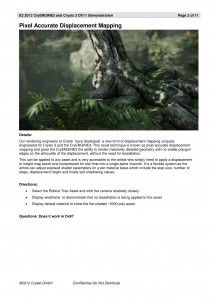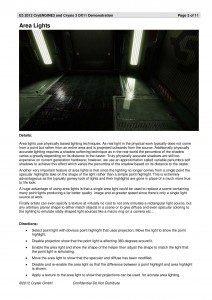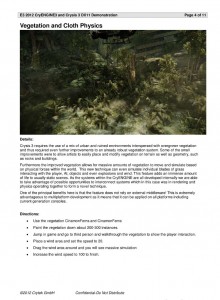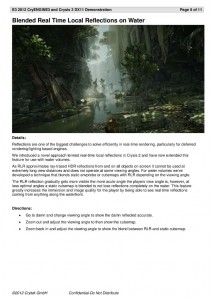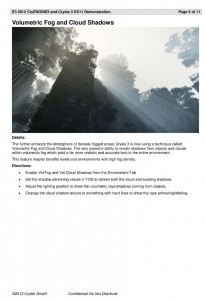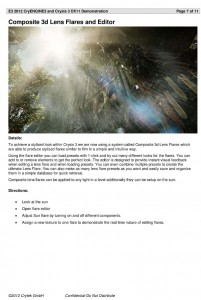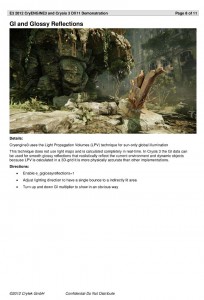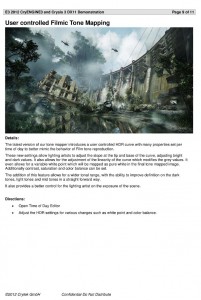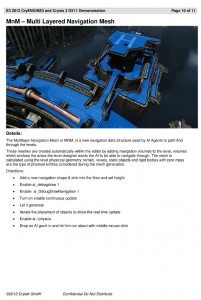A while back, we informed you about the day-one DX11 support of Crysis 3. Naturally, PC gamers were a bit sceptical about it as Crytek had stated that very same thing for Crysis 2. However, things are a bit different this time around as the studio is currently focusing on the DX11 features of CryEngine 3. During this year’s E3, Crytek held a VIP tech presentation in which they showcased the DX11 features that will be implemented in CryEngine 3.
According to the studio, CryEngine 3 will feature Pixel Accurate Displacement Mapping, Area Lights, Vegetation and Cloth Physics, Real-time reflections or RLR, Volumetric Fog and Cloud Shadows, Composite 3d Lens Flares and Flares Editor, GI + Glossy Reflections and Multi Layered Navigation Mesh.
You can find below the entire Tech document from Crytek’s VIP E3 2012 Presentation that was leaked online a couple of minutes ago. Crytek talks about a new displacement mapping technique – called Pixel Accurate Displacement Mapping – that gives CryEngine 3 the ability to render massively detailed geometry with no visible polygon edges, without the need for tessellation.
Crytek is also using a new shadowing system – called variable penumbra shadows – to achieve the effect which varies the penumbra of the shadow based on its distance to the light caster. Basically, think of it as a dynamic shadow softening technique.
Vegetation has also been improved, as the new version of CryEngine 3 can display massive amounts of vegetation to move and simulate based on physical forces within the world. Not only that, but CryEngine 3 can now simulate individual blades of grass interacting with the player, AI, objects and even explosions and wind.
Last but not least, CryEngine 3 (and Crysis 3) will take advantage of new techniques such as RLR (Realtime Local Reflections), Volumetric Fog, Volumetric Cloud Shadows, Composite 3D Lens Flares and Light Propagation Volumes.
Crysis 3 is currently slated for a 2013 release on PC, X360 and PS3!

John is the founder and Editor in Chief at DSOGaming. He is a PC gaming fan and highly supports the modding and indie communities. Before creating DSOGaming, John worked on numerous gaming websites. While he is a die-hard PC gamer, his gaming roots can be found on consoles. John loved – and still does – the 16-bit consoles, and considers SNES to be one of the best consoles. Still, the PC platform won him over consoles. That was mainly due to 3DFX and its iconic dedicated 3D accelerator graphics card, Voodoo 2. John has also written a higher degree thesis on the “The Evolution of PC graphics cards.”
Contact: Email


